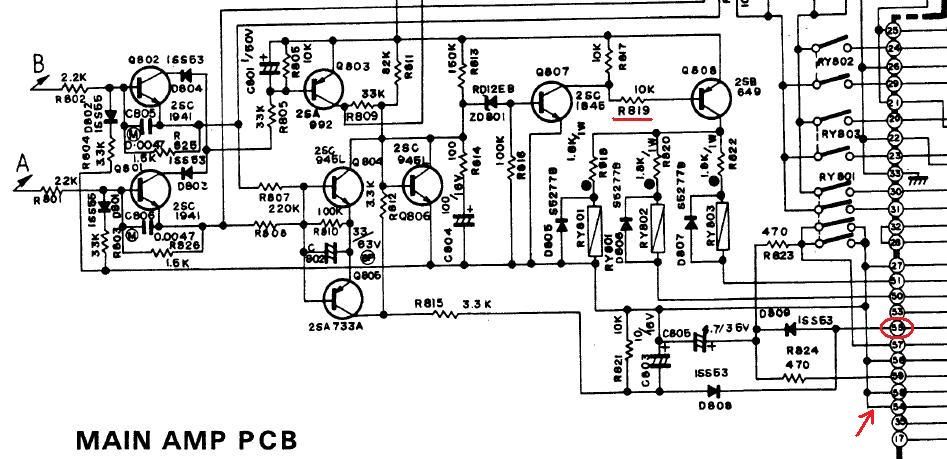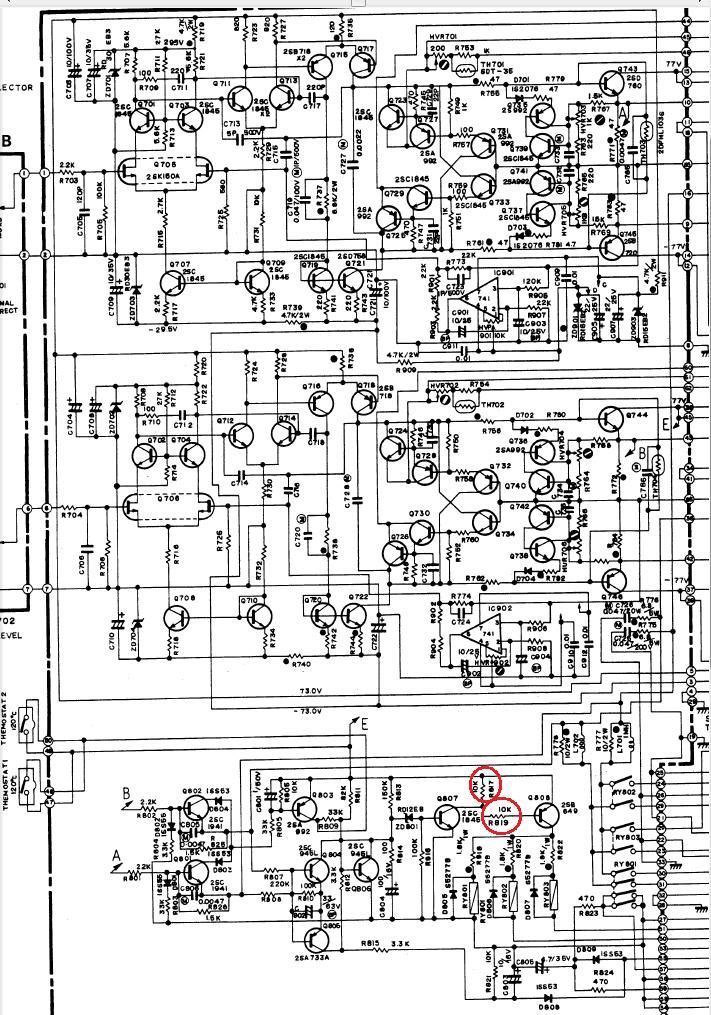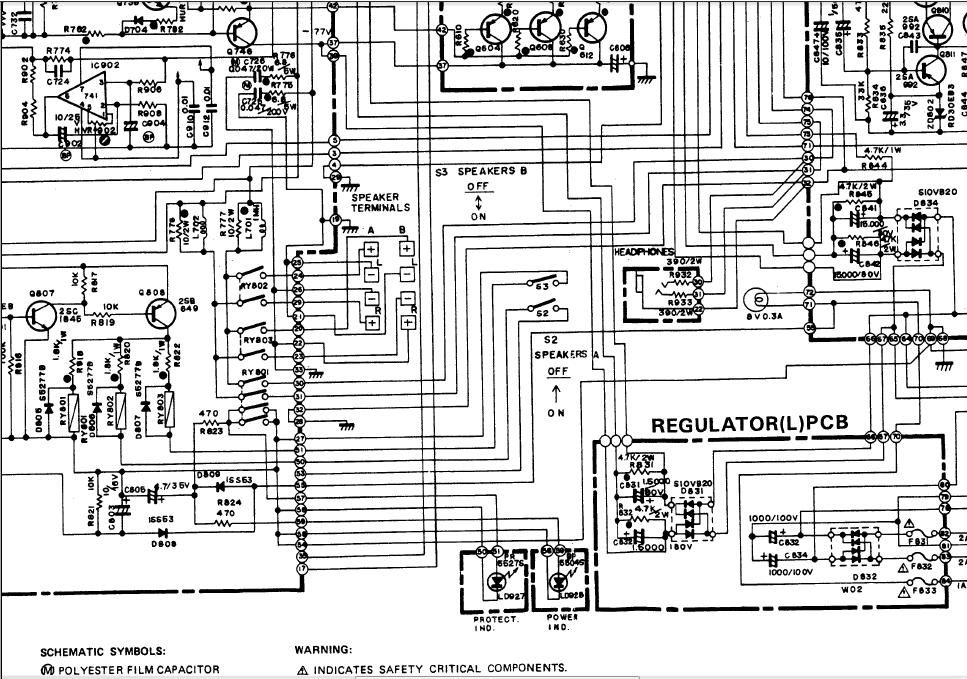Hi all.
I recently picked up an Alpha 440 that doesn't work. It's in excellent shape and would like to get it up and running again. I hope to use it to replace my M504 on Boston Acoustics A400's.
I've done some trouble shooting and found that if I remove the 1amp fuse on the regulator board, the amp will come out of protect.
The one amp fuse feeds the single lightbulb for the meters as well as travels to the main amp PCB. I've circled number 55 on the schematic where that power enters the PCB. The associated ground is indicated with a red area.
Upon visual inspection, there is a resistor that has been replaced along with a scorched area right below it. (R819 underlined) I measured the resistor and it's open. I'm assuming that excessive current draw through the resistor is what a)killed the resistor and b)is the cause of the amp being in protect.
Is a good starting point to unsolder the components located around r819 and test them? I have one of those octopus testers and a scope to test the transistors and caps.
Any help or insight would be appreciated!

I recently picked up an Alpha 440 that doesn't work. It's in excellent shape and would like to get it up and running again. I hope to use it to replace my M504 on Boston Acoustics A400's.
I've done some trouble shooting and found that if I remove the 1amp fuse on the regulator board, the amp will come out of protect.
The one amp fuse feeds the single lightbulb for the meters as well as travels to the main amp PCB. I've circled number 55 on the schematic where that power enters the PCB. The associated ground is indicated with a red area.
Upon visual inspection, there is a resistor that has been replaced along with a scorched area right below it. (R819 underlined) I measured the resistor and it's open. I'm assuming that excessive current draw through the resistor is what a)killed the resistor and b)is the cause of the amp being in protect.
Is a good starting point to unsolder the components located around r819 and test them? I have one of those octopus testers and a scope to test the transistors and caps.
Any help or insight would be appreciated!





